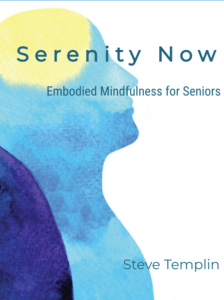The pace, pressures, and traumas of life pull us out of our heart and into our head. Living in our head keeps us in control and at a safe distance from reality and the creative, often vulnerable, felt wisdom of the heart.
The heart’s wisdom communicates as an energy that we all feel in our body. It’s the love, sadness, frustration, gratitude or any other sensed feeling that flows in response to the moment.
The wisdom of the heart is easily dismissed or derided in our head-centric, rational, control-oriented, left-brain culture. Heart wisdom is often relegated to the art or literature department because we’re told that it gets in the way and that it’s not important in the ‘real’ world.
Hold the presses!
The Science Supporting Heart Wisdom
The heart is receiving support, and not a moment too soon, from the science department … specifically, the neuroscience department. We’re being told that our connection with the felt experience of our body enhances physical, mental, and emotional well-being.
Dr. Antonio Damasio, a neuroscientist at USC, has shown that emotional intelligence, or the ability to feel and be informed by your feelings, is a crucial element for effective decision making. In other words, effective rational thought and decision making is undermined by low emotional intelligence.
Dr. Bessel van der Kolk, one of the world’s leading authorities on the treatment of emotional trauma, is demonstrating that safely reconnecting with our feelings is an important path to the resolution of trauma. In the arena of trauma therapy ‘feeling’ trumps ‘understanding’.
Dr. Peter Levine, another leading trauma specialist, has created a process that focuses on reconnecting with bodily felt experience that he calls ‘Somatic Experiencing’. His approach has proven to be very effective in resolving both the emotional and physical effects of trauma.
Dr. Eugene Gendlin from the University of Chicago discovered that the key to emotional and psychological well-being was based on one’s connection with the felt experience of the body.
Last but not least in this brief review is the research that’s emerged from the Institute of HeartMath. Essentially, they’ve shown that connecting with heartfelt experience completes a feedback loop that has a balancing influence on the autonomic nervous system.
When balanced the ANS supports health and happiness. An imbalanced ANS leads to the breakdown of physical and emotional well-being that we label as illness.
Here’s a partial list of their significant findings related to the benefits of connecting with heartfelt experience in a safe and balanced way.
The benefits of Heart Intelligence:
Whole brain synchrony (Functionally our brain is larger and more resourceful)
Autonomic nervous system balancing (Enhanced immune function, detoxification, and decreased inflammatory signals)
Enhanced cognitive performance
Decreased pain (both physical and emotional) and anxiety
Increased intuition, compassion, and altruism
Enhanced interpersonal rapport and communication
Balanced hormones like DHEA and Cortisol
More stable moods
Enhanced athletic performance and coordination
Growing connectedness to the depths of oneself as well as a growing connection with others and the planet earth.
Our willingness to drop down out of our head and enter into the felt wisdom of our body opens the door to self-healing and renewal. Learning to connect with the felt life of our body activates a degree of self-awareness, self-regulation, and self-healing that cannot be accessed otherwise.
Resistance to Change … You can count on it!
It helps to be aware that we can unconsciously resist change even if that change were to result in less physical or emotional pain.
One challenge to reconnecting deeply with oneself is that this emerging heart intelligence fosters authentic, transformative change. If we’re clinging too tightly to our self-image or to our beliefs we’re in fact defending ourselves against change and against any new mode of awareness that fosters change.
The solution is to be open, aware and gentle with yourself as you practice your self-regulation skills … ideally on a daily basis.
One simple strategy to begin or reinforce this conscious connection with your body’s wisdom is by taking a single slow breath in – take it in consciously and slowly to a count of 5 or 6 – and let it out slowly to a count of 5 or 6 while appreciating this brief time-out from your busy day. Repeat as desired.
This simple and rapid … who can’t spare 12 seconds … breathing break interrupts unconscious patterns and begins the process of becoming more conscious.
Enjoy!

 Steve is a retired Doctor of Oriental Medicine, Acupuncture Physician, and HeartMath Trauma-Sensitive Certified Practitioner with over 35 years of clinical experience in the fields of Energy Medicine, Energy Psychology, and Biofeedback.
Steve is a retired Doctor of Oriental Medicine, Acupuncture Physician, and HeartMath Trauma-Sensitive Certified Practitioner with over 35 years of clinical experience in the fields of Energy Medicine, Energy Psychology, and Biofeedback. 